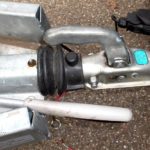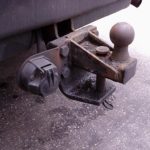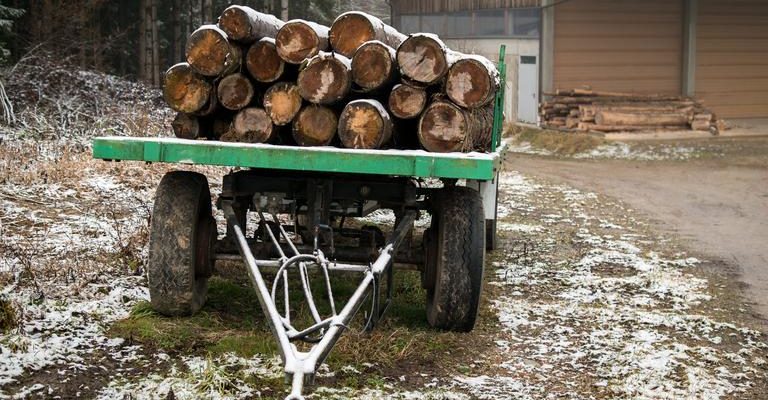PIVOTING TO “20” (4 min read)
 Backing up a hitched trailer is an artform. A combination of abstract reasoning, physics, and hand-eye coordination can create the skill level of professional athletes. Boaters know the skill. So do woodsmen. That’s where I learned the craft.
Backing up a hitched trailer is an artform. A combination of abstract reasoning, physics, and hand-eye coordination can create the skill level of professional athletes. Boaters know the skill. So do woodsmen. That’s where I learned the craft.
The skill of hauling frontwards and backwards was developed early. Way back, when I was eight or nine years old, my father drafted me (I did not enlist) into the military of forced labor. Yes, I was physically big, then toughened by the toil, and I could do physical labor sun-up to sun-down. But the skills I learned took on different forms in the academic world.
 The 12-hour days digging, building, weeding, or cleaning were transferred into 12-hour days of thinking, reading, writing, teaching, or researching. The length of my days now often begins with the number “3” before the other numbers on my watch. I wake, even after five hours of sleep ready, eager to work. I spend more time sitting now – hazards of my “job.” But the hours and the skills remain the same.
The 12-hour days digging, building, weeding, or cleaning were transferred into 12-hour days of thinking, reading, writing, teaching, or researching. The length of my days now often begins with the number “3” before the other numbers on my watch. I wake, even after five hours of sleep ready, eager to work. I spend more time sitting now – hazards of my “job.” But the hours and the skills remain the same.
The technique of backing up a trailer load of firewood for the house is now found in preparational study for the next speaking engagement, teaching assignment, or writing request. The expertise of one type of work transfers the mindset into the next task, the next time of life.
 Shifting from one place of life to another is the hinged pin connecting truck to trailer. The pivot – that hinged pin or “hitch” – is the key to backing up a trailer and rotating into a new way of thought. Leadership gurus like to use the word “pivot” to suggest turning on a dime, moving from “fixed” to “fluid.”
Shifting from one place of life to another is the hinged pin connecting truck to trailer. The pivot – that hinged pin or “hitch” – is the key to backing up a trailer and rotating into a new way of thought. Leadership gurus like to use the word “pivot” to suggest turning on a dime, moving from “fixed” to “fluid.”
 No one, however, is going to move anywhere without that hitch ball in place. You have seen them. That apparatus affixed to the back end of a pick-up truck that you must avoid in a supermarket parking lot. The spherical metal ball attached to the vehicle fits into the coupler – it looks like a “hood” – of the trailer. That connection point, the “pivot,” allows the skilled driver to back up the trailer.
No one, however, is going to move anywhere without that hitch ball in place. You have seen them. That apparatus affixed to the back end of a pick-up truck that you must avoid in a supermarket parking lot. The spherical metal ball attached to the vehicle fits into the coupler – it looks like a “hood” – of the trailer. That connection point, the “pivot,” allows the skilled driver to back up the trailer.
My days of backing up trailers attached to work trucks are long gone. But my “pivoting” skills have not diminished. Any high school teacher knows the pivot: turning on a dime to answer a question that seems to have nothing to do with the classroom discussion. Any businessperson knows the pivot: refocusing on the latest developments in her field. Any mother knows the pivot: diverting her attention from one immediate need to another. Any military person knows the pivot: redeploying reserves into a needed location for the troops.
 Right now, every American knows the pivot: reorganizing for a new world to come after “Covid-19.” I learned early in my life about the importance of that linchpin hooking truck to trailer. I have learned from constant changes in my life over the last two decades what a pivot looks like in everyday life. Right now, I’m thinking about that hitch on the back of “19.”
Right now, every American knows the pivot: reorganizing for a new world to come after “Covid-19.” I learned early in my life about the importance of that linchpin hooking truck to trailer. I have learned from constant changes in my life over the last two decades what a pivot looks like in everyday life. Right now, I’m thinking about that hitch on the back of “19.”
The hitch and trailer coupling allow me and other Americans to pivot to a new mindset for a new world. We will reallocate resources. We will rearrange our personal reserves. We will reassign our thinking to a new normal. We will be ready for what comes after “19.” Our ability to back up the hitched trailer will get us to “20.”
 I believe in Proverbial wisdom. “By wisdom a house is built, and through understanding it is established; through knowledge its rooms are filled with rare and beautiful treasures.” – Proverbs 24:3-4
I believe in Proverbial wisdom. “By wisdom a house is built, and through understanding it is established; through knowledge its rooms are filled with rare and beautiful treasures.” – Proverbs 24:3-4
AFTERWORD. It strikes me now that a new “20” is often used as a call sign for “location.” After the fact, it seems apt to make that “hitch connection.” We are headed to a new “20,” a new “location.”

